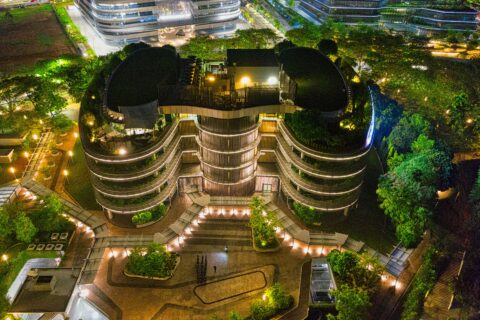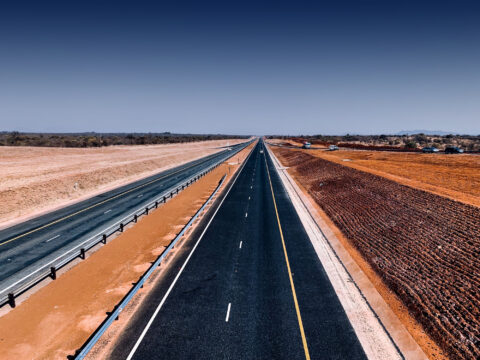Infrastructure
Here Comes The Sun
The Southern African Development Community (SADC) region has long been struggling with power shortages, which can hamper socio-economic development, place the brakes on international investment, and have broad implications for health and education, among others.
The challenge facing countries in this region is that building the infrastructure required to overcome these shortages is both costly and time-consuming. This, says Ryan Muller, CEO of MSEC, is why some SADC nations are contemplating substituting green energy for the more traditional types.
He explains that for a country such as Botswana, which has been purchasing power from Eskom, the impact of previous blackouts has had a detrimental effect on the nation’s economy. To enable the country to become more self-sufficient in power generation, a plan has now been put in place to build a massive renewable energy plant that will meet the nation’s power generation requirements.
“Project Letsatsi, which means ‘sun’, is a 100MW solar plant being developed by MSEC, which will be the first in the world developed to such a scale, while including capacity to store a percentage of that energy. It is this storage capacity that sets it apart from most other solar generation facilities,” he says.
Muller notes that the plant will be able to store up to 5% of the solar energy generated, so that it can be released into the network during the evening peak periods.
Technical equipment
“The storage will be achieved via energy storage machines supplied by a foreign manufacturer, which has developed devices that can literally store the energy in liquid form, before discharging it when required.”
Muller says these machines are already successfully in use in Africa and across the world, so they are proven technology. In addition, these devices are containerised and modular, so they can be moved to different locations or even replaced if necessary, with very little effort.
“The cost of solar is coming down all the time, and now sits at less than $1 to produce 1 watt. This mainstream adoption of solar energy has led to reduced implementation costs, and the tier one solar panel manufacturer we are using – a Chinese company known as Trina Solar – is a global manufacturer of next-generation photovoltaic products.”
Furthermore, he explains, the developers are using centralised megawatt inverters, which are larger than decentralised inverters, but were necessary due to the scale of the project. This means Project Letsatsi will be relying on fewer inverters, instead of the 160 it would otherwise have needed.
“Obviously, there is some risk, in that if one goes down, it will mean a larger proportion of our solar panels are unusable until repairs are made, but it also offers advantages, in that it requires a lot less space and involves a lot less maintenance,” he says.
Developing the project
Muller points out that the total number of solar panels used in the plant is expected to be around 315 000, covering an area of roughly 202ha.
“We are currently searching for the best place to site the plant, as there are many factors that need to be taken into account. For one thing, we need to be close to a substation and power transmission lines that can handle the power the plant is going to generate. Obviously, we also need somewhere that receives sun for the vast majority of the year.”
He adds that it would also be more suitable if a site could be found closer to a major city, because a lot of infrastructure – such as roads and sanitation – already exists there, which will make the construction process much easier.
“One thing we are excited about is that we will be using big data and analytics to provide ongoing monitoring of the plant. We will be able to monitor it to such a granular level that we will be able to check on the performance of individual strings of solar panels,” he says.
MSEC anticipates the project duration will be less than a year. This may seem short, Muller says, but it is because setting up solar is a far less complex task compared to coal or nuclear.
“While we are still in the process of concluding all the required documentation and paperwork, we hope to break ground on the project during the winter, as working outside the rainy season will be critical.”
A positive impact
Apart from the obvious benefit that a 100MW power station will bring to the region, Muller suggests the surrounding communities should also expect to gain from its development.
“The plan is to procure materials like fencing, paving and concrete from the local economy, as far as possible, and we expect to employ a large local labour force, to which we will transfer skills during the construction phase. This will include local suppliers, civil engineering and construction organisations, and even local caterers.”
He indicates that from a foreign direct investment point of view, the project is expected to inject around R500bn into the local economy. The total projected budget for the actual development, he adds, will exceed R1bn.
“We want people to see this project as an inspiration, not only in terms of how effectively green technology can be used, but also to underline its enormous potential in bringing power to more rural areas. Although our plant will have thousands of panels connected to hundreds of energy storage machines, think what just one small array of panels and a single battery could mean to a rural village.
“Our aim is to demonstrate that, with this energy, you can take anything, from a single household to a small city, off the traditional power grid, both during the day and at night. I think this is where the future lies for Africa – using this technology to ultimately deliver world-class education or medical infrastructure into places where you cannot necessarily run traditional power. In doing so, we hope to achieve our biggest goal, which is to improve people’s lives across Africa,” he concludes.






